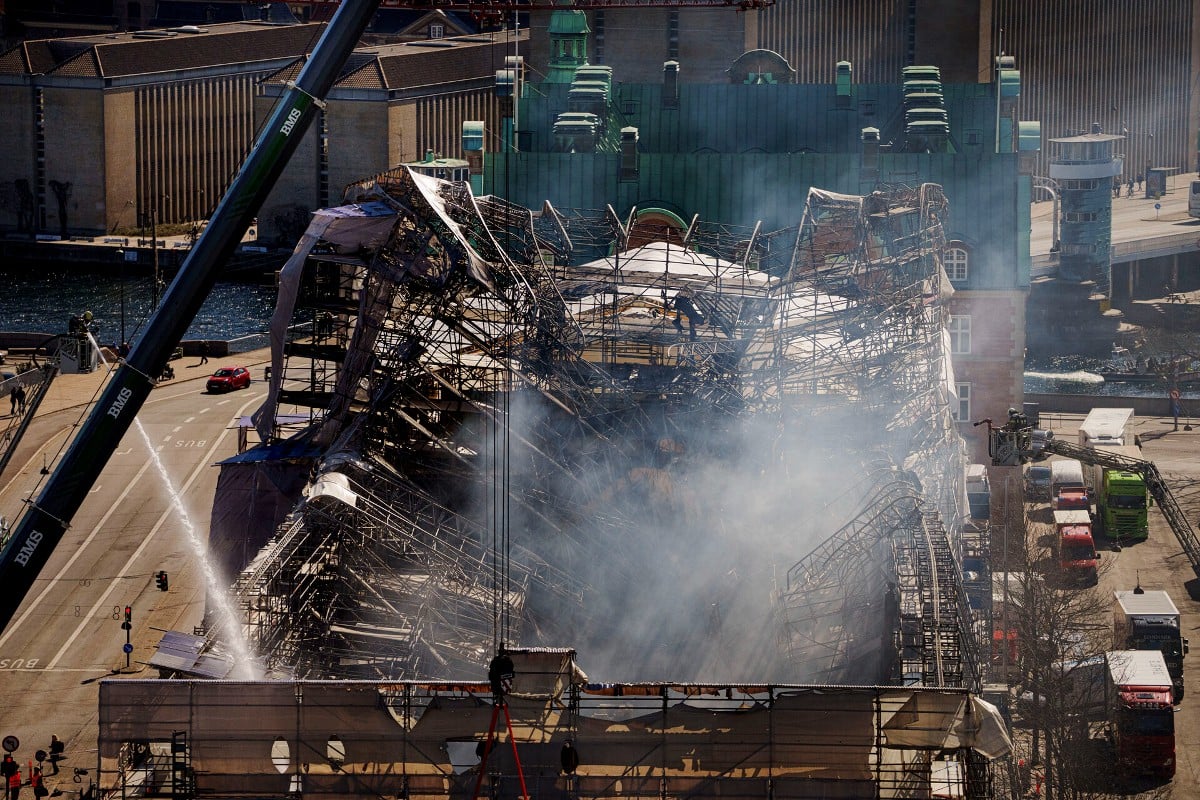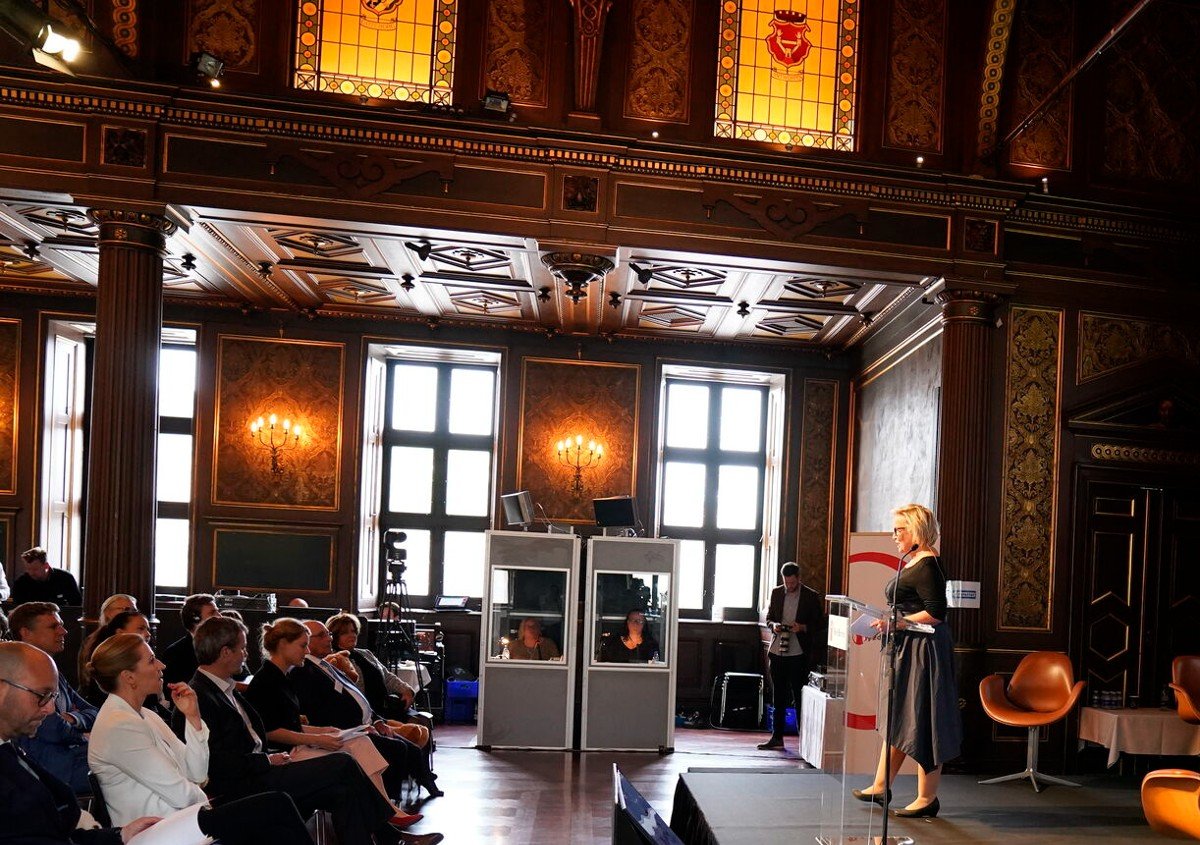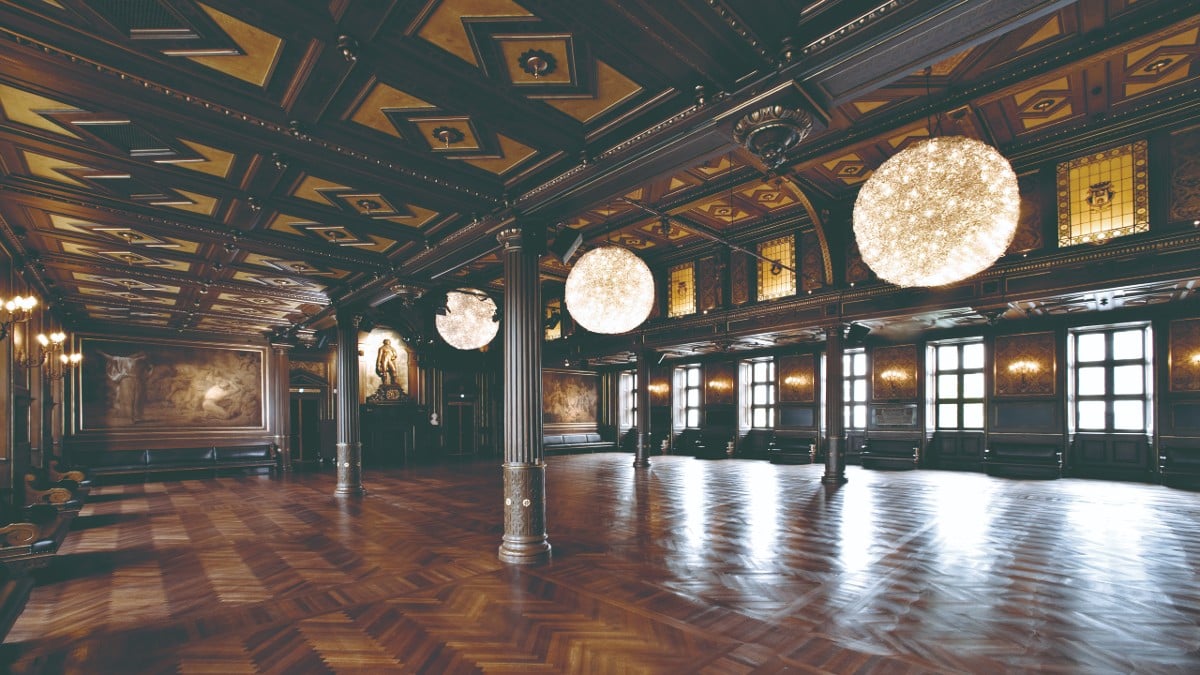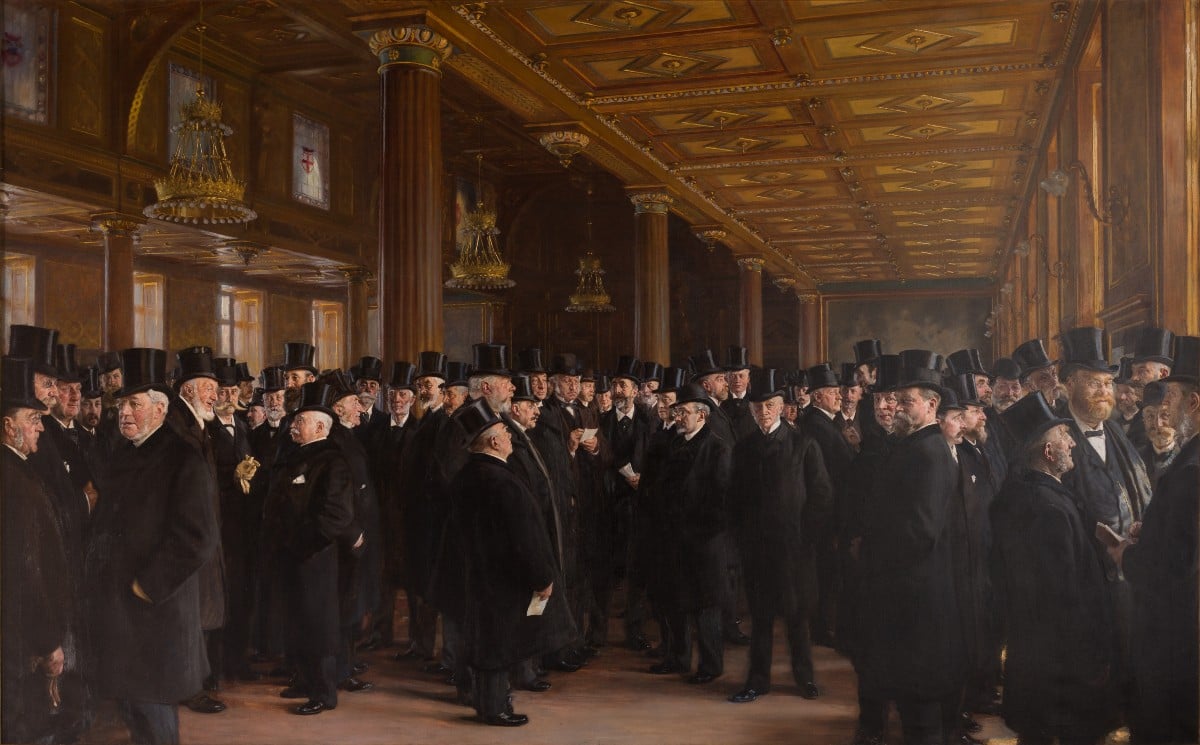IN PICS: What will it take to rebuild Copenhagen's old stock exchange building?

The chief executive of the Danish Chamber of Commerce, Brian Mikkselsen, has pledged to rebuild the burnt-out Børsen building, "no matter what". Here's what we know about the damage and what it will take to return it back to its former glory.
So, what's the damage?
The building has lost much of its roof, together with its iconic dragon-tail spire, which toppled on Tuesday morning.
 The distinctive dragon tail spire of the 400-year-old Stock Exchange building has collapsed. Photo: Linda Kastrup/Ritzau Scanpix
Parts of the old roof had recently been replaced with brand new copper cladding, which is now destroyed.
The distinctive dragon tail spire of the 400-year-old Stock Exchange building has collapsed. Photo: Linda Kastrup/Ritzau Scanpix
Parts of the old roof had recently been replaced with brand new copper cladding, which is now destroyed.
 Photo: Ida Marie Odgaard/Ritzau Scanpix
The heads of the four dragons whose tails formed the building's spire had also recently been restored. The Local has not found any reports of whether any parts of the dragons or their tails can be recovered.
Photo: Ida Marie Odgaard/Ritzau Scanpix
The heads of the four dragons whose tails formed the building's spire had also recently been restored. The Local has not found any reports of whether any parts of the dragons or their tails can be recovered.
 Photo: Linda Kastrup/Ritzau Scanpix
On Wedesday morning, both the roof and the spire were in ruins.
Photo: Linda Kastrup/Ritzau Scanpix
On Wedesday morning, both the roof and the spire were in ruins.

The lavishly decorated main hall of the stock exchange, which was frequently used for functions and celebrations in the capital, has also been completely destroyed, along with its stained glass windows, wooden panelling, and decorative wallpaper.

Photo: Emil Helms/Ritzau Scanpix
 Photo: Mads Claus Rasmussen/Ritzau Scanpix
Photo: Mads Claus Rasmussen/Ritzau Scanpix
 Photo: Danish Chamber of Commerce
Photo: Danish Chamber of Commerce
Brian Mikkelsen was, however, handed the surviving pinnacle of the toppled spire on Wednesday morning by a firefighter.
"I promised the firefighter that it [the tip of the spire] would come up again, and I will probably honour that wish," Mikkelsen said, telling Danish public broadcaster DR that the believed this surviving part of the spire must now be part of the rebuilt stock exchange building.
"It gave a glimmer of hope. Because it will once again adorn our beautiful workplace and Copenhagen," he also wrote on X.

Photo: Brian Mikkelsen
Mikkelsen estimates that about half of the building has been destroyed.
"I have just been in there for the fifth time, and about half of the stock exchange building is more or less intact. Some of the legendary halls and rooms, including Tietgen's office, where he started his many companies, are still there," he said.
CF Tietgen was a legendary Danish financier and industrialist, who lived from 1829 and 1901 and who started the bank that has now grown into Nordea, the largest bank in the Nordics, and the electronics company GN Store Nord.
He also estimated that around 400 of the over 1,000 artworks that adorned the building's interior had been rescued, with rescuers prioritising the most valuable.
In particular, the 4m wide painting "From Copenhagen Stock Exchange", by Peder Severin Krøyer, from the Skagen school of 19th century Danish painters, was rescued.

Photo: Villy Fink Isaksen, Wikimedia Commons, License cc-by-sa-4.0

Several busts were also recovered from the building and saved from the blaze.

Photo: Roberta Fortuna/Danish National Museum
What will it take to rebuild the old stock exchange building?
Obviously it is still early days, and estimates of the potential cost of restoring the building vary between hundreds of millions of kroner to upwards of a billion kroner.
"I don't think that there is anyone today who can really give an estimate of how long it will take, what it will cost, how we will do it, or what the outcome will be," Arne Høi, Head of the Department of Architecture and Culture at the Royal Academy, told Denmark's public broadcaster DR.
Høi said that the building had a lead roof rather than a copper roof until it was renovated in the 1870s, with the dragon spire also replaced at some point in the 18th century.
Kirsten Nielsen from Konstrukturforeningen, an association of Danish building professionals, said that it was near impossible to build back a building that is 400 years old exactly as it was, as many of the craft and building techniques that were originally used have long died out.
But she said it was possible to build something similar, citing Christiansborg Castle Church, which burned down in 1992, as an example.
Architect and professor Jørgen Overby, told DR it would take as long as ten years to restore the building and cost up to a billion kroner.
Mogens Morgen, a professor at the Aarhus School of Architecture, told DR that the changes in available building materials meant it would be impossible to return the original in its entirety.
"Of course, it can never be quite the same, because you have lost the original materials that have been present since the 1620s," he said.
Where will the money come from?
According Denmark's Børsen financial newspaper, at least three different insurance companies could be liable for some of the costs of reconstruction. The building itself is insured with IF Forsikring, the building's contents with Protector Forsikring, while the construction and restoration work ongoing at the time of the fire was insured by Codan insurance.
Which of these ends up paying out money to help fund the reconstruction and how much they may be liable for, depends on the results of the investigation into the cause of the fire.
Denmark's culture minister, Jakob Engel-Schmidt, said on Tuesday he was ready to do "everything I can to ensure that that the dragon spire will once again tower over Copenhagen", but said it was too early to give a position on whether the government would help with reconstruction.
In a joint statement, Copenhagen's mayors, including Lord Mayor Sophie Hæstorp Andersen, said that it was "important that we as a society - private, public, companies and institutions - now work together to have the iconic building rebuilt".
Comments (1)
See Also
So, what's the damage?
The building has lost much of its roof, together with its iconic dragon-tail spire, which toppled on Tuesday morning.




The lavishly decorated main hall of the stock exchange, which was frequently used for functions and celebrations in the capital, has also been completely destroyed, along with its stained glass windows, wooden panelling, and decorative wallpaper.



Brian Mikkelsen was, however, handed the surviving pinnacle of the toppled spire on Wednesday morning by a firefighter.
"I promised the firefighter that it [the tip of the spire] would come up again, and I will probably honour that wish," Mikkelsen said, telling Danish public broadcaster DR that the believed this surviving part of the spire must now be part of the rebuilt stock exchange building.
"It gave a glimmer of hope. Because it will once again adorn our beautiful workplace and Copenhagen," he also wrote on X.

Mikkelsen estimates that about half of the building has been destroyed.
"I have just been in there for the fifth time, and about half of the stock exchange building is more or less intact. Some of the legendary halls and rooms, including Tietgen's office, where he started his many companies, are still there," he said.
CF Tietgen was a legendary Danish financier and industrialist, who lived from 1829 and 1901 and who started the bank that has now grown into Nordea, the largest bank in the Nordics, and the electronics company GN Store Nord.
He also estimated that around 400 of the over 1,000 artworks that adorned the building's interior had been rescued, with rescuers prioritising the most valuable.
In particular, the 4m wide painting "From Copenhagen Stock Exchange", by Peder Severin Krøyer, from the Skagen school of 19th century Danish painters, was rescued.


Several busts were also recovered from the building and saved from the blaze.

What will it take to rebuild the old stock exchange building?
Obviously it is still early days, and estimates of the potential cost of restoring the building vary between hundreds of millions of kroner to upwards of a billion kroner.
"I don't think that there is anyone today who can really give an estimate of how long it will take, what it will cost, how we will do it, or what the outcome will be," Arne Høi, Head of the Department of Architecture and Culture at the Royal Academy, told Denmark's public broadcaster DR.
Høi said that the building had a lead roof rather than a copper roof until it was renovated in the 1870s, with the dragon spire also replaced at some point in the 18th century.
Kirsten Nielsen from Konstrukturforeningen, an association of Danish building professionals, said that it was near impossible to build back a building that is 400 years old exactly as it was, as many of the craft and building techniques that were originally used have long died out.
But she said it was possible to build something similar, citing Christiansborg Castle Church, which burned down in 1992, as an example.
Architect and professor Jørgen Overby, told DR it would take as long as ten years to restore the building and cost up to a billion kroner.
Mogens Morgen, a professor at the Aarhus School of Architecture, told DR that the changes in available building materials meant it would be impossible to return the original in its entirety.
"Of course, it can never be quite the same, because you have lost the original materials that have been present since the 1620s," he said.
Where will the money come from?
According Denmark's Børsen financial newspaper, at least three different insurance companies could be liable for some of the costs of reconstruction. The building itself is insured with IF Forsikring, the building's contents with Protector Forsikring, while the construction and restoration work ongoing at the time of the fire was insured by Codan insurance.
Which of these ends up paying out money to help fund the reconstruction and how much they may be liable for, depends on the results of the investigation into the cause of the fire.
Denmark's culture minister, Jakob Engel-Schmidt, said on Tuesday he was ready to do "everything I can to ensure that that the dragon spire will once again tower over Copenhagen", but said it was too early to give a position on whether the government would help with reconstruction.
In a joint statement, Copenhagen's mayors, including Lord Mayor Sophie Hæstorp Andersen, said that it was "important that we as a society - private, public, companies and institutions - now work together to have the iconic building rebuilt".
Join the conversation in our comments section below. Share your own views and experience and if you have a question or suggestion for our journalists then email us at [email protected].
Please keep comments civil, constructive and on topic – and make sure to read our terms of use before getting involved.
Please log in here to leave a comment.